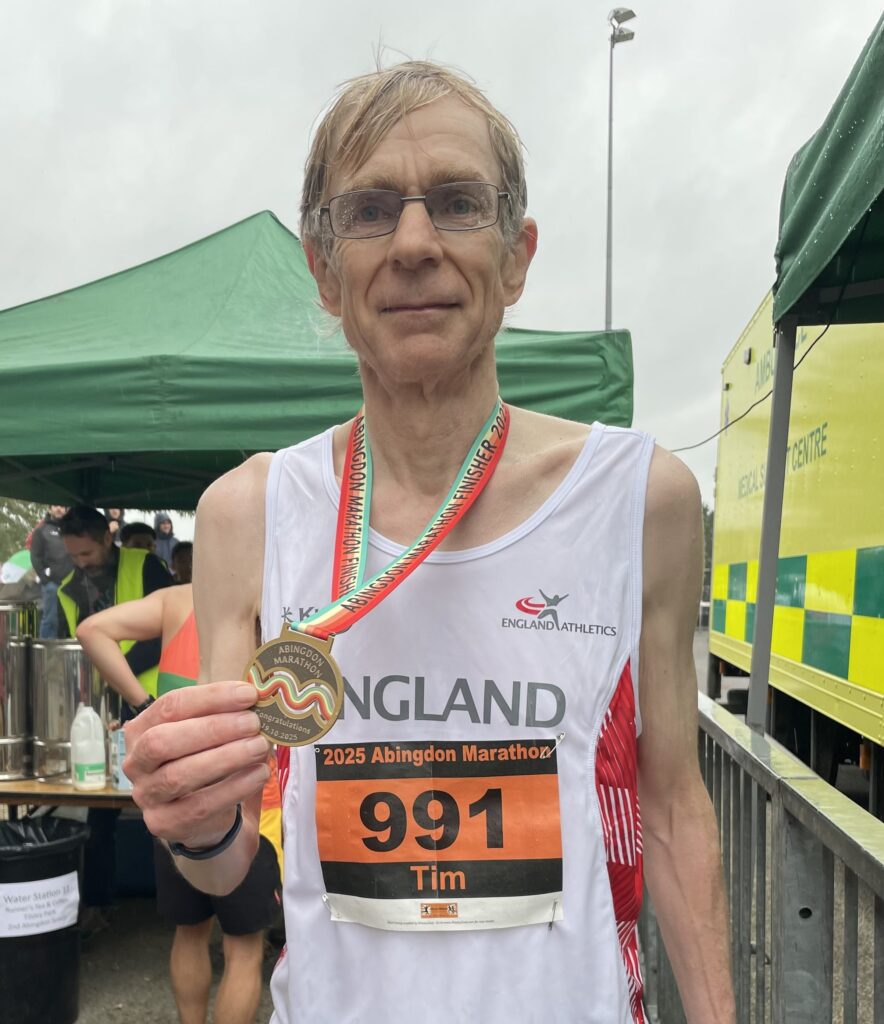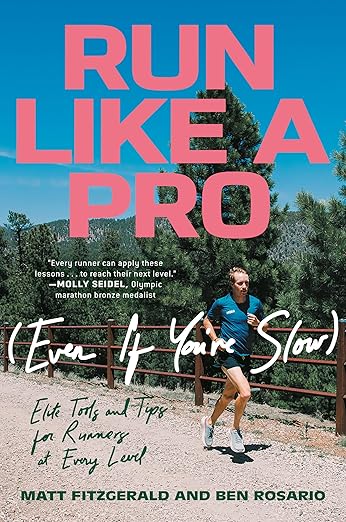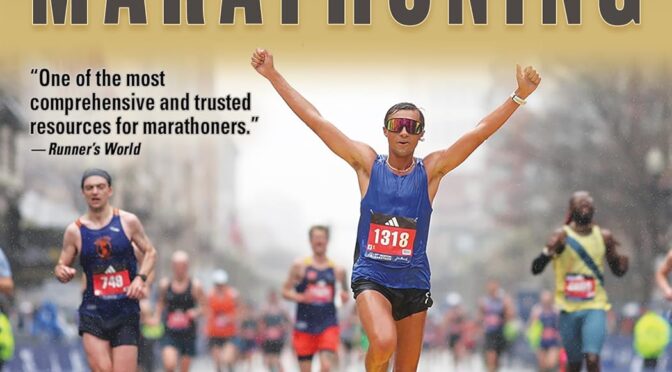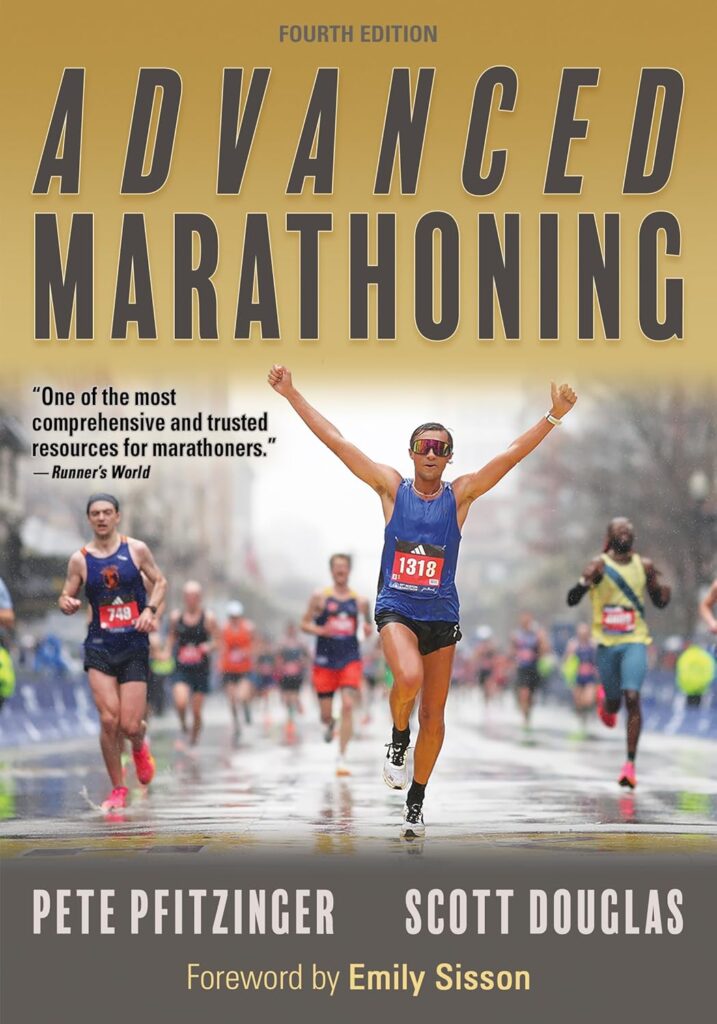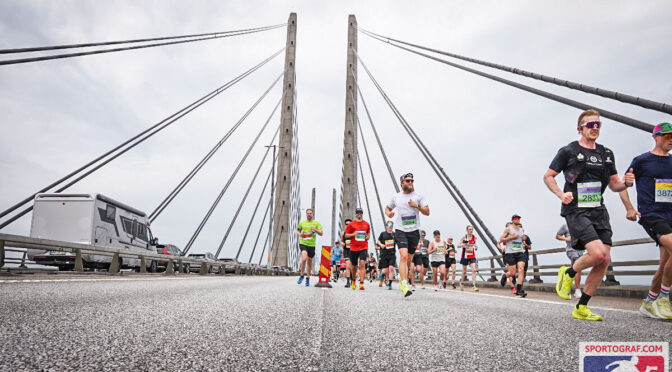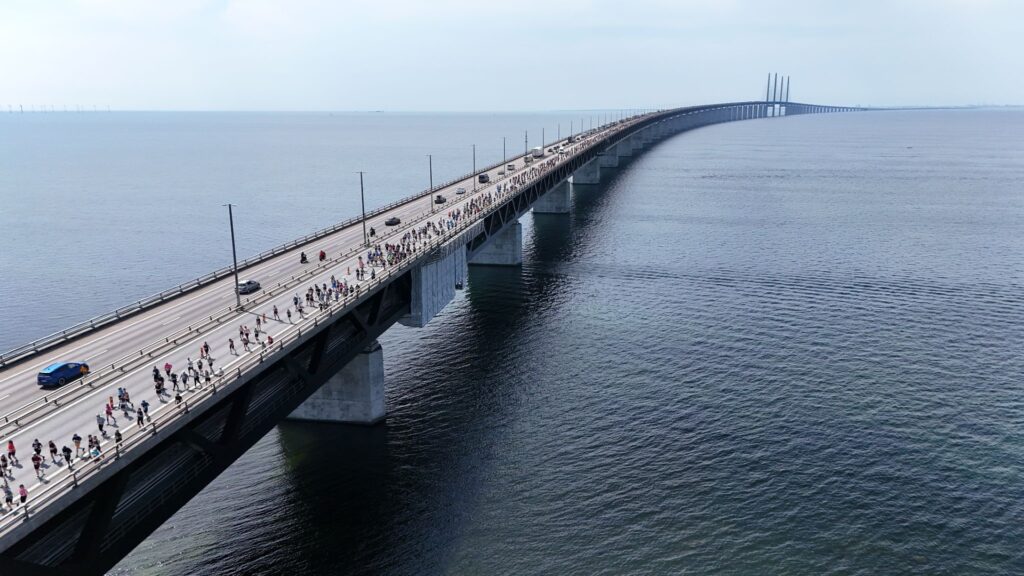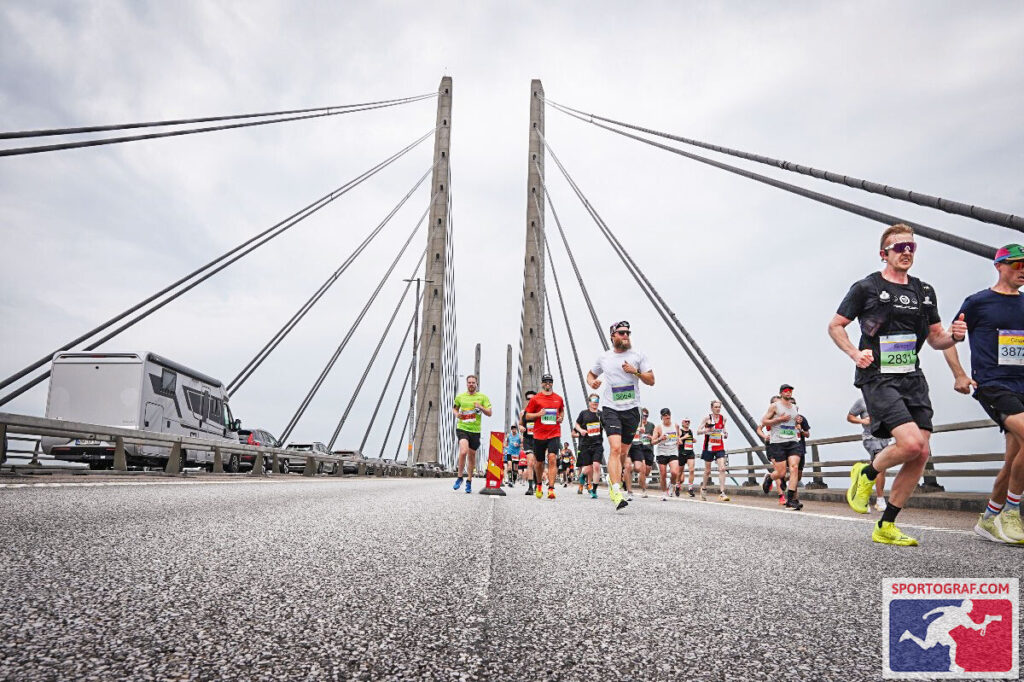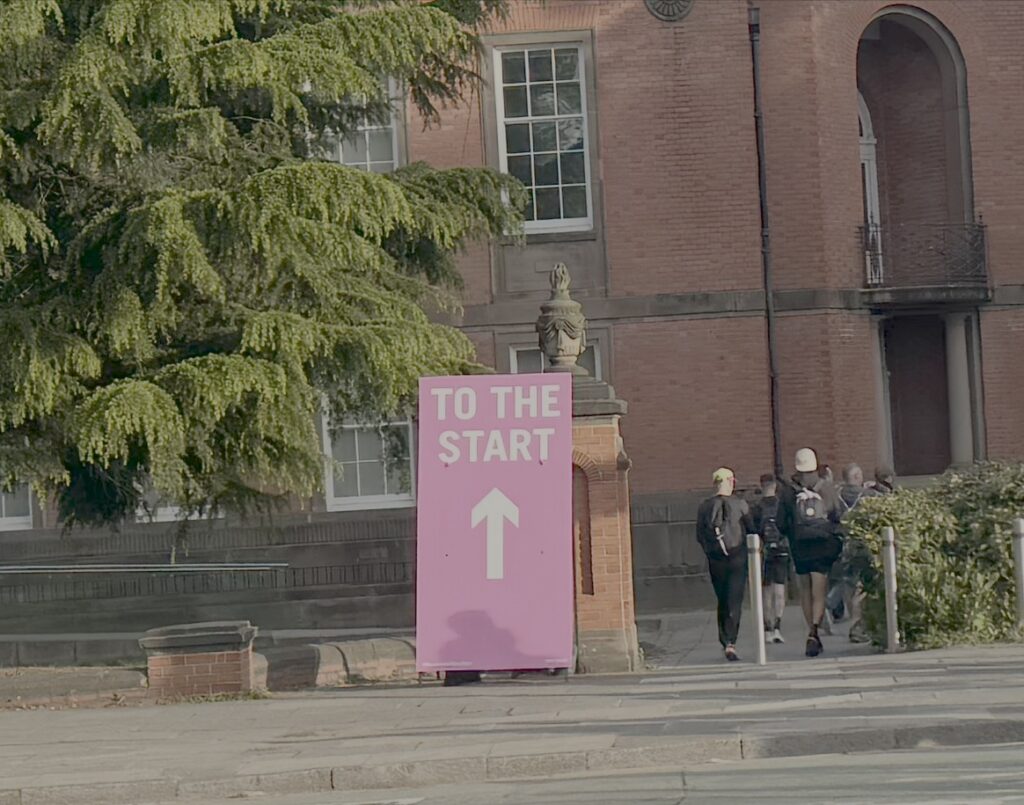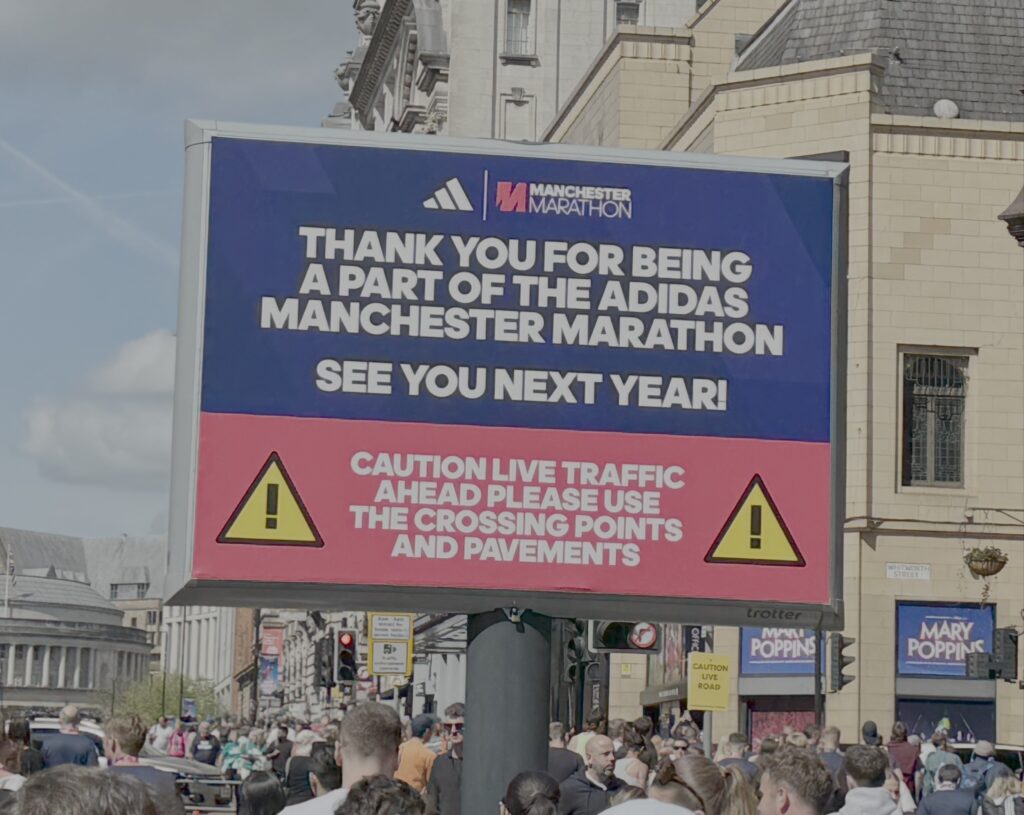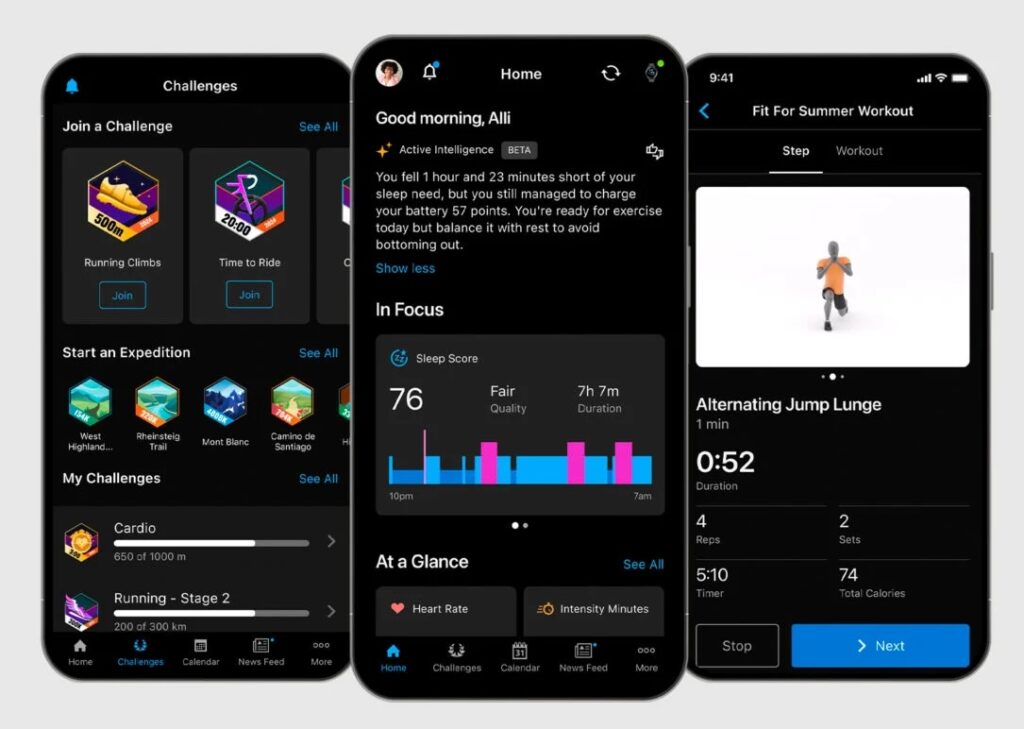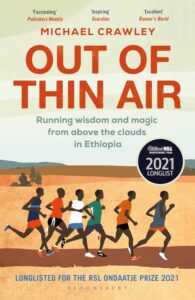The New York marathon is one of the world’s great races, and a natural ambition for any marathon runner. Entry can be hard to come by, with an over-subscribed lottery and challenging age qualifying times; but I got an opportunity to run it in January via Abbott’s Age Group World Champions (AGWC) scheme, in the age category 65-69. I did not want to pass it up, so I booked it immediately.
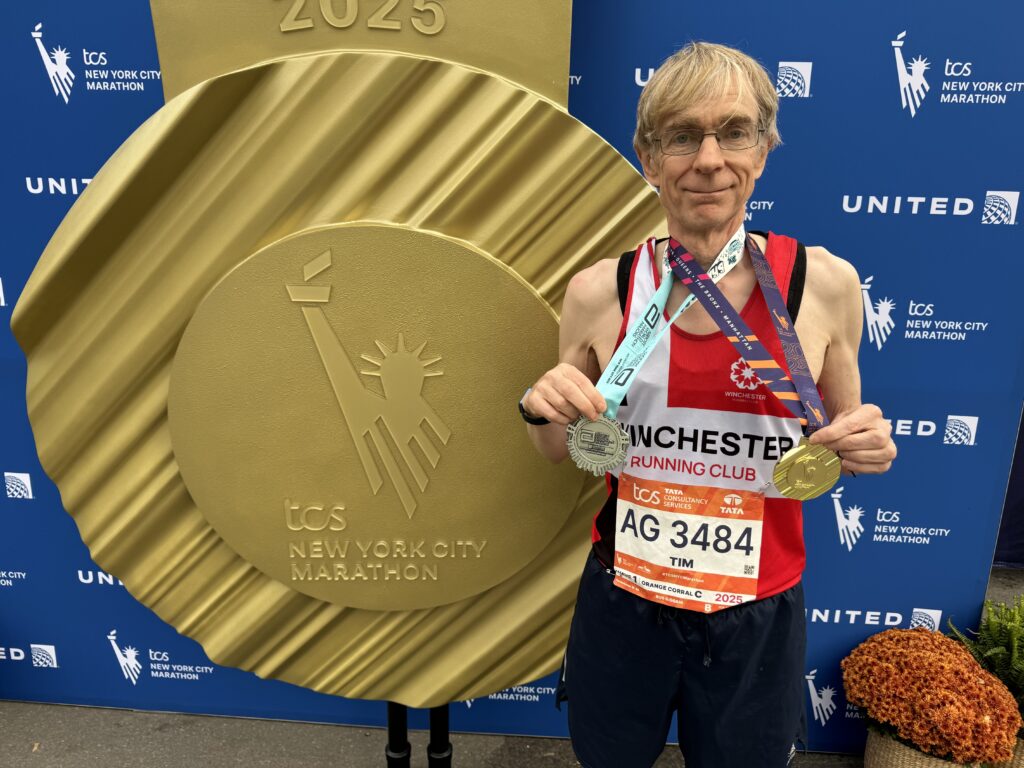
There was extra cost, but also a few perks like a Wave 1 start and a dedicated tent in the start village, plus it sounds grand! I booked the flights and hotel; then in April ran Manchester marathon and qualified (just!) to run as an England Masters Representative in the Abingdon Marathon. That also seemed like a great opportunity, though it was just two weeks before New York. I figured I would run Abingdon in the best time I could manage, and then run New York without worrying much about the pace.
I trained therefore for Abingdon, using the Pfitzinger and Douglas 18/55 schedule from their book Advanced Marathoning. I added some extra miles where possible, on the basis that high mileage would help me with the intensive fortnight to come. Peak week over the training period was 71.5 miles. Three week taper for Abingdon in the normal way, that race went well and I got a PB of 3:25:33.
I was then into two weeks of recovery/taper for New York, punctuated by a 10 mile race in the middle weekend. Ran that with a 10 mile PB, then on the Thursday headed from the UK to New York.
The day before the marathon, I ran the Abbott Dash to the Finish Line 5K with my wife Alison, intending to run it as a shake-out at around 8:00/mile. This is a delightful race with around 10,000 runners, from the United Nations building through the streets of Manhattan and into Central Park, with the finish being the same as for the marathon the following day. I ran a little faster than planned and was surprised to find myself 3rd in age category, perhaps because most marathon runners in the race were more sensible and saved their legs.
Saturday afternoon though things began to fall apart. We had been in all sorts of crowds and queues, at the airport and on trains and planes, at the expo, near the Village Parade (Halloween celebration) on Friday evening, and more. I picked up some kind of mild bug; I didn’t feel right, my nose was blocked and my throat was sore. With these things, you never know if it is the beginning of something worse, or something that will soon clear up. I did the best thing I could think of, which was to sleep as much as possible. So at 20:00 I was in bed with the alarm set for 4:00am. It was not an easy night as fretted about how I felt, and whether I should even run at all. Missing the race would be wretched after so much preparation and getting to New York; on the other hand, running while sick could make a mild illness much worse.
Luckily I made a good recovery overnight; and who knows, maybe there was a touch of maranoia in there too. My nose was clear, my stomach was fine, and the sore throat nearly gone. Got up, grabbed my start bag, and headed for the subway to the New York Public Library and the 5:00am bus to the start.
Pre-race
Arriving at the library at 4:45am was confusing at first. There were buses in front of the library but no queues and it took me a while to figure out that the you had to wait at the back of the library, where I joined hundreds of other runners and began to feel a bit of race excitement. The bus, we were warned, could take up to 90 minutes. In practice though it took less than half that time, presumably because of the early hour, and we were unloaded into a cold, pitch-dark start area at at about 5:40am, three and half hours before the race started.
I had been told that the start village is not a great experience and so it proved. The first challenge was to find the AGWC tent; the signage was not brilliant but after wandering around for a bit I figured out that there are several different colour villages, and that my village was orange. A volunteer pointed me in the right direction and I found the AGWC area which actually had two tents with plastic seats, the same bagels and coffee that were on offer everywhere, and some dedicated portaloos. There were nowhere near enough seats for everyone so I sat on the grass in one of the tents, grateful that it was a bit warmer than outside, and chatted to some other runners. One told me that she had done a 100 mile race two weeks ago, and the Marine Corps Marathon (MCM) a week ago, which made my own schedule look easy. Tapering is overdone, she said, adding that she ran for the experience not the performance.
At around 8:10am we were led round to the start corral, went in an milled around for a bit, then decided I should do a bit of warming up, exited the corral and ran round in circles with some others, doing perhaps half a mile at easy pace. Then back into the corral before it closed at 8:45. I felt OK and ready to start.
As we got near to the start time of 9:10am the ribbons dividing Orange A B and C were removed and we moved up to the bridge and the start line. I consumed my first gel. Frank Sinatra sang New York New York. At last, after the most complicated race logistics I have encountered, we were running.
Race
The marathon begins with a slow gentle climb up the bridge and everything was fine. I tried to hold about an 8:00/mile pace which would get me a 3:30. The weather was perfect and the crowd support started as soon as we arrived into Brooklyn; it was amazing.
All went well until about half way; pace slipped a bit in miles 11 and 12 but not badly. After mile 13 though I began to slow down. It was not hitting the wall; it was just fatigue, combined with three other factors:
- I was not at my best after feeling unwell the day before
- I had run intensively over the previous two weeks including a marathon, a 10 mile race and then the Dash to the Finish Line 5K
- The time did not matter that much to me. I had planned for this to be an easier race having gone all-out at Abingdon
I do not know which of these factors was the most important. Running a race though is a mental as well as a physical effort, and whereas in my previous marathons I was highly motivated to get a target time, for this one all I wanted was something respectable, and when I found it hard to keep the pace I just let it slip.
I had some other issues. One was that the Garmin got further and further ahead of the mile markers. This is inevitable as one does not take the shortest path; but seemed worse than usual; my final Garmin distance was 26.57 miles. I looked at the Garmin less than usual, for this reason and also because I knew I would not like the pace it showed.
Another was nausea. I took a gel at the start and again at 5 miles, 10 miles and 15 miles. I stopped at the water stations when thirsty which was about 1 in 3 of them. I would normally take another at 20 miles but my body was telling me that if I did, I might vomit. Better, I thought, to keep my stomach settled rather than throw up.
Despite all the above, I loved the race. It was as if I had compartmentalised my brain; one part was thinking about race strategy, while another was just enjoying the experience of running over bridges with jaw-dropping views and through the boroughs of New York City each with their own character, while being cheered constantly by a crowd of New Yorkers.
I had paid a ridiculous $10.00 to have my name on the bib; it was a waste of money because printed so small. However I was wearing my club vest which said “Winchester Running Club”, and heard constant shouts of encouragement for “Winchester!” and also had a few chats with other runners who knew the city or were curious which Winchester it was. One said, “are you red or blue?” I was puzzled but then realised he had read the name as “Manchester” and was referencing two famous football teams! So I explained.
At around mile 21 I attempted to do some sums to work out what sort of time I could manage. I knew 3:30 was well out of reach but sub-3:45 still seemed possible and I wanted to achieve that. So I put in some effort to keep my pace; most of the variation in those last miles is because of climbs or descents. Going into Central Park was a big boost and I loved the experience of running there. Then you go out onto the street briefly, then back into Central Park for the finish. Waved at Alison who had somehow bagged a great spectator position around 200m from the finish, crossed the line in 3:37:39 which was only a few seconds worse than my time at Abingdon Marathon 2024. If I am reading correctly, it is a good enough time to get me into the NYC marathon next year, should I wish to repeat the experience.
Post-race
The finish experience was not that great, too much walking and waiting before I was done. You are moved on quickly for obvious reasons; with nearly 60,000 runners it could easily clog up. I picked up a goody bag, the lovely medal, a second finisher medal for AGWC, and a bright orange poncho. Then I was in another line for an AGWC photo, then picked up my dropped bag (very quick), found Alison and headed back to the hotel.
The subway journey though was amazing, so many people sayng “congratulations” when they saw the poncho and medal.
The following day we headed out early; the finish area was being dismantled but there was a photo spot for showing off your medal and getting your picture taken (on your own mobile phone) by a volunteer. There was also the marathon pavilion with copies of the New York Times showing all the sub-4 hour finishers plus a few more, medal engraving, and some official finisher shirts and tops. After that we squeezed in a free trip (for medal holders) to the spectacular Top of the Rock at the Rockefeller Center before we had to go to the airport for the flight home.
Tips and learnings
- Doing two marathons in two weeks is not for everyone. A carefully managed taper followed by the race and then a recovery plan is the right approach if you want the best time and lower injury risk. But if you find, as I do, that you recover quite quickly, then it can be done without disaster.
- The travel and stress of getting to the start line for a major marathon thousands of miles from home is substantial and does not help your health or your pace.
- Regarding the NYC marathon, for those staying in Manhattan the main options for travel to the start are the bus or the ferry. I chose the bus because it goes direct to the start, whereas with the ferry you still need a bus from the ferry terminal to the start. The snag with the bus though is that you have leave really early, before the roads close. With hindsight I wish I had taken the ferry, which would have given me a bit more time in bed and got me to the start later.
- The AGWC is extra cost but has some nice extras; having the tents at the start village was a big bonus despite the overcrowding. I do have reservations though about starting in wave 1. The problem was that many of us would normally be in a later wave, so we were overtaken by faster runners and the pace team was no use. On the plus side, earlier start means earlier finish. The water stations were plentiful but lack of trash bins meant most cups were simply dropped on the ground and became a slip hazard; I am guessing that this gets worse for later waves since the volunteers cannot easily sweep them away.
- The energy and excitement of the NYC marathon is like nothing I have experienced before; it is a great run and worth striving for.
Splits
| Mile | Time |
|---|---|
| 1 | 7:58 |
| 2 | 7:30 |
| 3 | 7:46 |
| 4 | 7:47 |
| 5 | 7:58 |
| 6 | 7:48 |
| 7 | 7:43 |
| 8 | 7:51 |
| 9 | 7:58 |
| 10 | 7:46 |
| 11 | 8:09 |
| 12 | 8:09 |
| 13 | 8:00 |
| 14 | 8:09 |
| 15 | 8:29 |
| 16 | 8:49 |
| 17 | 8:02 |
| 18 | 8:16 |
| 19 | 8:21 |
| 20 | 8:44 |
| 21 | 9:12 |
| 22 | 8:41 |
| 23 | 8:44 |
| 24 | 9:12 |
| 25 | 8:18 |
| 26 | 8:28 |
| 27 | 8:13 (pace) |
